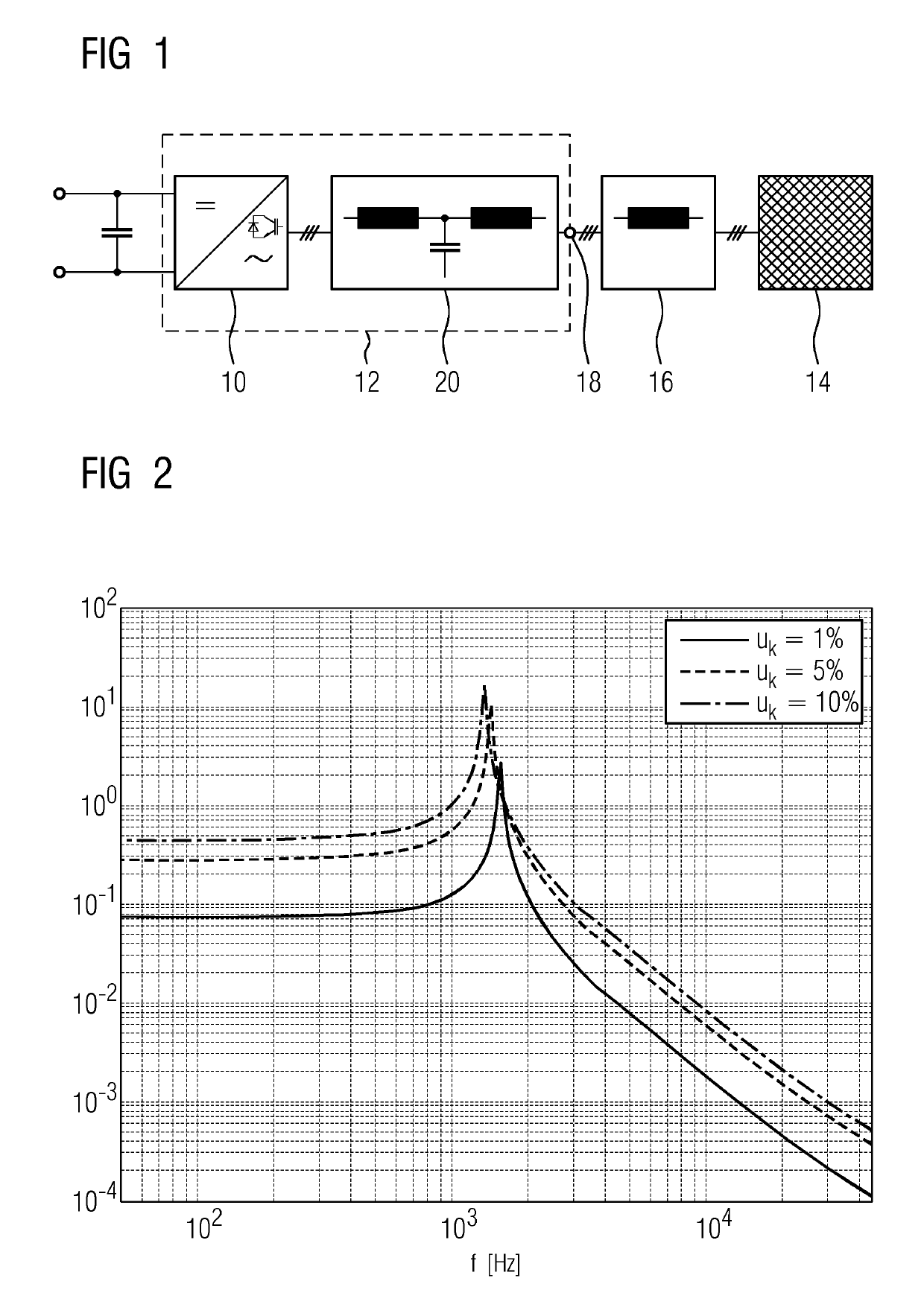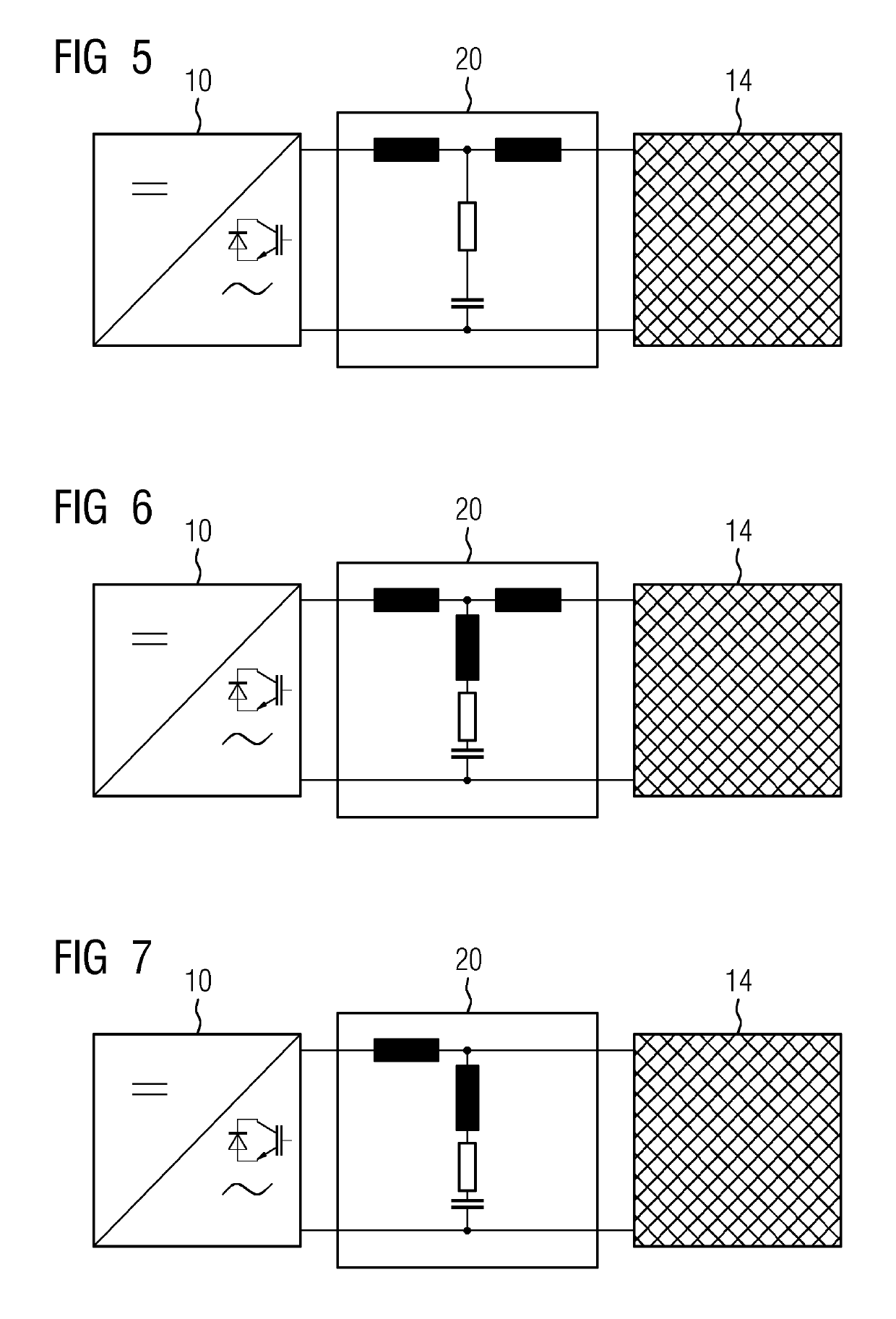Method for operating an inverter system and inverter system working according to said method
a technology of inverter system and inverter, which is applied in the direction of power conversion system, electrical apparatus, ac-dc conversion, etc., can solve the problems of network parameters that can vary, knowledge is not available, etc., and achieve the effect of enhancing the efficiency of the inverter, reducing the number of energy losses, and adapting the switching frequency
- Summary
- Abstract
- Description
- Claims
- Application Information
AI Technical Summary
Benefits of technology
Problems solved by technology
Method used
Image
Examples
Embodiment Construction
[0043]The diagram in FIG. 1 shows—as already mentioned at the start—an active network-side inverter (network-connected inverter) 10. This is shown as part of an inverter system 12 and will also be referred to for short as an inverter 10 below. Shown on the far right in the diagram in FIG. 1 is the supply network 14. An inductance of the network 14 is shown separately as network inductance 16. The inverter system 12 is connected to the network 14 as a three-phase connection at a network connection point referred to below as the Point of Common Coupling (PCC) 18. A network filter 20 is connected upstream of the inverter 10. Inverter 10 and network filter 20 together form the inverter system 12.
[0044]The diagram in FIG. 2 shows the frequency curve already mentioned at the start of a non-choked LCL filter functioning as a network filter 20 with reference to the transmission function between the output voltage of the inverter 10 and the resulting voltage at the Point of Common Coupling (...
PUM
 Login to View More
Login to View More Abstract
Description
Claims
Application Information
 Login to View More
Login to View More - R&D
- Intellectual Property
- Life Sciences
- Materials
- Tech Scout
- Unparalleled Data Quality
- Higher Quality Content
- 60% Fewer Hallucinations
Browse by: Latest US Patents, China's latest patents, Technical Efficacy Thesaurus, Application Domain, Technology Topic, Popular Technical Reports.
© 2025 PatSnap. All rights reserved.Legal|Privacy policy|Modern Slavery Act Transparency Statement|Sitemap|About US| Contact US: help@patsnap.com



